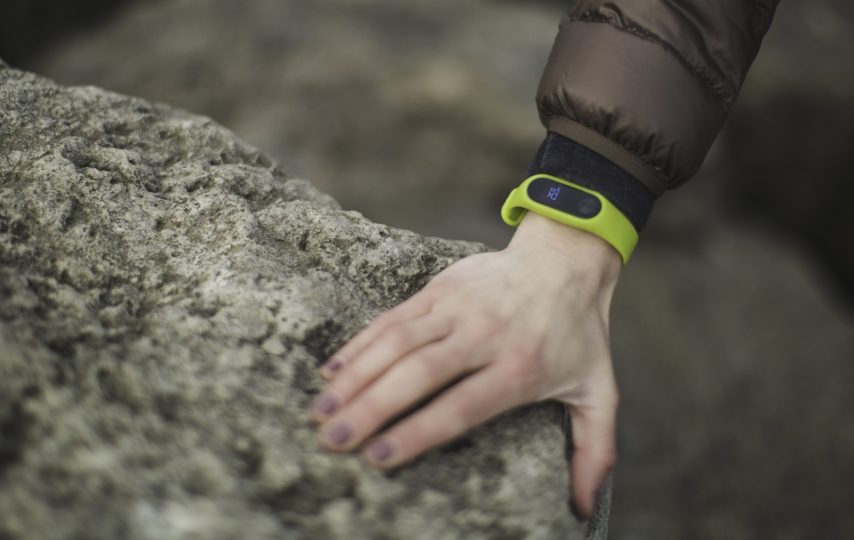If you’ve ever tried to shed a few pounds, you know how challenging it can be. With crazy diets going in and out of style, new drugs promising results and risky surgical procedures on the rise, it’s easy to get overwhelmed and stay on the couch.
That’s where IoT can come into play. With more and more people hoping to get fit, consumer IoT devices that assist in the weight loss process are also becoming more prominent.
From apps to smart kitchens, here’s some of the ways IoT is being applied to help users manage their weight right now.
Fitness with IoT
IoT, or the internet of things, can be classified as any internet connected device. So chances are, you might have already been using the IoT on you fitness journey.
When it comes to IoT and weight loss, exercise is probably one of the most common and well known applications. From wearables, like Fitbit, to apps, here are some ways users can incorporate IoT into their exercise routine.
Apps
Sometimes, it can feel like you’re working out with zero results. Enter apps like AtheGene or Sculpt which create workouts especially tailored to your body. These apps use the users genetic information to craft the best workout regimen for their bod. Specifically, Sculpt performs 3D scans to measure BMI and tissue health.
If you’re struggling with motivation or don’t know where to start, apps like Couch to 5k or Zombie Run could help you log some cardio.
Couch to 5k is an extremely popular app available for IOS and android. The app, also referred to as C25K, tracks your runs, your speed, and tells you exactly what to do for 6 weeks in order to train for a 5k run.
If you need a little extra push, Zombie Run! immerses you in a zombie apocalypse where running is your only option.
Devices and Trainers
Yes, apps can be helpful, but they can often leave you to your own devices. Perhaps that’s why in-home IoT devices are becoming more popular.
Arguably, one of the most well-known devices on the market is the Peloton stationary bike, which markets itself as “immersive cardio.”
This bike can track your vitals during a workout, but it’s biggest appeal is the access it provides to Peloton’s library of classes and workouts viewable on the connected screen. Users can attend a live class and workout with one thousand others at the same time.
If biking isn’t your style, you can try Tonal. Tonal is a screen-like device you adhere to a wall. It features built in strength training attachments. Tonal’s Coach AI learns your strength as you workout and can adjust weight and resistance in real time. Not only that, but the device sends data to your smartphone, where you can track your progress after every workout.
Finally, one of the most discouraging parts about weight loss can be the scale. Traditional scales don’t measure things like food or water in the stomach, heavy clothing, or gained muscle vs. fat loss, which can lead to an inaccurate reading.
That’s why an IoT scale could help you see real results. Wifi enabled scales can handle multiple users and take into consideration your muscle mass and other things that may fluctuate.
The scale then sends this data to your smartphone after each weigh in where it’s translated into easy to understand graphs and statistics, helping you crack the weight loss code.
In The Kitchen With IoT
Staying in shape and exercising regularly certainly helps you lose weight. However, it’s not the only ingredient needed shed a few pounds. In fact, experts say that weight loss is really achieved in the kitchen.
Apps
Calorie trackers can be super helpful when trying to lose weight. For example, Myfitness Pal takes into consideration your height, weight, lifestyle and goals to calculate the amount of calories you should be consuming a day.
You can also scan the barcodes of what you eat to discover calorie and nutrition information. Want to have another slice of cake? Log your exercise and MyFitnessPal will calculate how many calories you burned and reward you with more calories to eat during that day.
To help you stay motivated, the app allows you to connect with friends and like-minded people after completing your daily calorie intake.
Devices
Getting a new device to store all your food might not sound like the best investment when your goal it stay on a strict diet. But a smart fridge can actually help you stay on track.
By keeping track of the stock of your fridge, you’ll be able to more effectively plan meals tailored to your healthy diet. Some models even allow users to set reminders and leave personalized notes that can aid in motivation and focus.
But a fridge isn’t the only thing in your kitchen that can be IoT enabled. Orangechef is in the process of creating smart kitchen countertops.
These counters contain sensors and AI that will be able to tell what’s placed on it. From there, the counter can make recommendations on portion size, how to best prepare the food or even recommend avoiding it all together. It can even pair with other devices in order to send recipe ideas and dietary trends to the user.
Looking into the Future
Weight loss is a huge industry. And it seems that each year we see more and more new tech designed to help people go down a dress size or two.
In the future, it’s possible that IoT could be applied to numerous other practices. Take Coolsculpting for example, a relatively new procedure where fat cells are frozen off the body. How could IoT innovate that process? Experts are also wondering how IoT could factor into other non-invasive surgical procedures, and even plastic surgeries like liposuction and more.
For now, however, stick to what we know works: a healthy diet and exercise regime, and use these IoT devices to assist you on the road to health.







